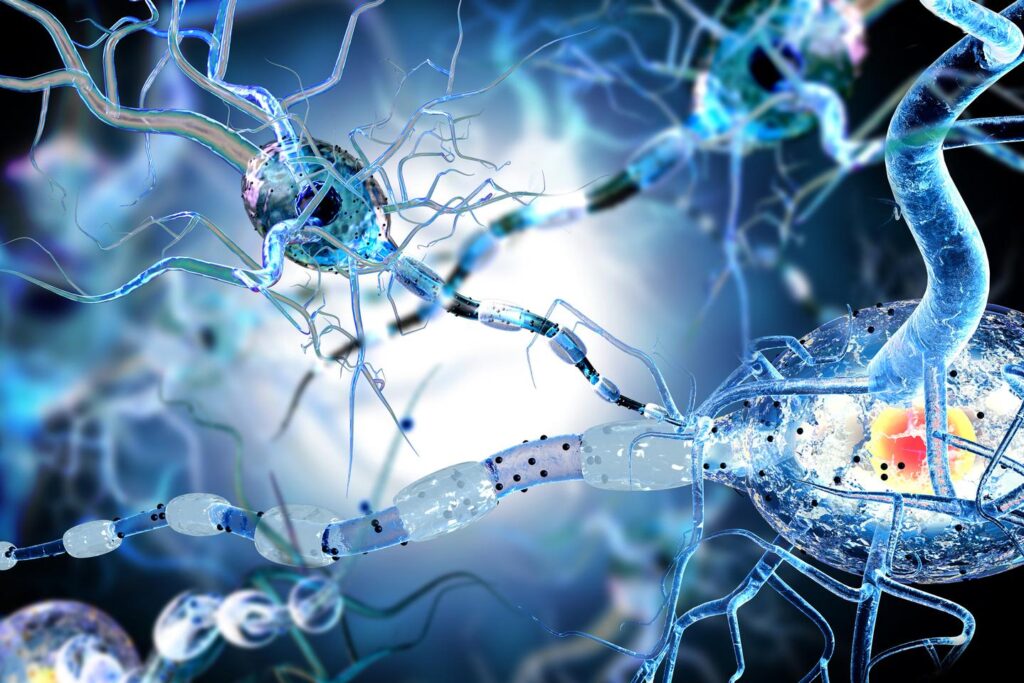Researchers have genetically engineered stem cells so that they differentiate into greater numbers of the specific dopamine-producing neurons needed for effective Parkinson’s disease cell therapy. The method could also be used to generate other types of brain cells to treat a range of disorders. In Parkinson’s disease (PD), dopaminergic neurons in the substantia nigra, the part of the midbrain that controls movement, progressively degenerate and die, leading to a reduction in dopamine.
With less dopamine, the millions of nerve and muscle cells required for movement can’t coordinate effectively, resulting in the tremors, rigidity and shuffling gait that are hallmarks of the disease. Currently, PD treatment is focused on symptom control, predominantly using medications to boost dopamine levels, which can produce problematic side effects. Stem cell therapy has emerged as a promising treatment for the disease, using undifferentiated cells that develop into midbrain dopaminergic neurons to replace the damaged or lost ones, thereby improving motor deficits.
However, stem cell therapy’s effectiveness depends on the purity of midbrain dopamine neurons derived from stem cells. Cell purity and identity are essential because, unlike drugs, cells can persist in the body for a lifetime. Current stem cell differentiation techniques can produce variable results in terms of purity, but now, researchers from the Danish Research Institute of Translational Neuroscience (DANDRITE) have used genetic engineering to guide stem cells to differentiate into the dopaminergic neurons required to treat PD.
“Stem cells offer promising potential for treating Parkinson’s disease by transforming into specific nerve cells,” said Mark Denham, corresponding author of the study outlining the researchers’ novel method. “However, the precision of this transformation process poses a significant challenge with current methods, resulting in low purity. ” Addressing the overall low yield of midbrain dopaminergic neurons that can result from stem cell differentiation, the researchers focused on the gene regulatory networks that determine cell fate.
By knocking out genes involved in early cell lineage specification, they engineered pluripotent stem cells with restricted differentiation potential, enhancing the likelihood they’d differentiate into midbrain dopaminergic neurons and not ‘undesired’ lineages. The researchers named the engineered cells lineage-restricted undifferentiated stem cells or LR-USCs. Importantly, LR-USCs generated significantly more midbrain dopaminergic neurons than unedited cell lines.
And, when they transplanted LR-USCs into PD model rats, the animals’ motor behavior improved. “Using our genetically engineered cells, we generate a higher purity of dopamine cells; for patients, this will reduce the recovery time and diminish the risk of relapse and medication use,” Denham said. “My goal is to help patients stay off their medication, which requires purity.
So, my next step is to transfer my method to clinical trials. ” The researchers say their method has significant advantages for clinical applications, allowing for easy upscaling and reproducibility and reduced cell line variability. In addition, by deleting different sets of genes, LR-USCs can be designed to preferentially generate other neural populations or cell types, which could be used for cell transplantation therapy or drug discovery to treat a range of disorders.
The study was published in the journal . Source:.
From: newatlas
URL: https://newatlas.com/medical/genetically-engineered-stem-cells-dopaminergic-neurons-treatment-parkinsons/
